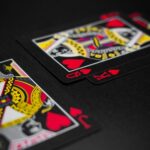What is spray paint?
Spray paints are liquid oil-based paint that is contained in an Aerosol can. It comes in a sealed and pressurized container. You can use spray paint directly to the desired surface, materials, texture, etc.
Advantages of spray paint:
- Even coverage without brush stocks.
- Spray painting is faster than brush painting.
- Mostly spray paint is oil-based and provides a more durable finish.
- Spray paint can be used on any surface.
- Spray paint dries much more quickly than regular paint.
- Easier cleanup, no brushes rollers buckets of paint try to wash.
Disadvantages of spray paint:
- Requires experience to provide drips and runs.
- Risk of uneven finish sometimes.
- Uses more paint.
- Expensive equipment is required.
- Usually completed in one long start to finish project.
Usage of spray paint:
Spray paint is easy to use. Spray paint allows you to cover the surface quickly and more evenly than traditional paint. Spray paint give you an effective way to evenly coat and touch up in the different DIY projects, home décor, vehicle, furniture, etc.

Spray paint finishes:
Spray paint comes in a variety of different finishes that can help you achieve your desired look. Here are some most popular spray paint finishes.
- Flat: This spray paint appears completely matte on the surface.
- Semi-gloss: This spray paint has a finished look that is between matte and gloss.
- Gloss: This spray paint has moderated glossy finish.
- High-gloss: This spray paint offers the highest gloss and produces the shiniest gloss coating on the surface.
- Stain: This spray paint has a medium gloss and low sheen finish.
- Metallic: This spray paint makes a surface high metallic finish.
Stages of drying spray paint:
First, understand that the difference between wet and dry paint is not a black and white situation. The application process of paint goes through four stages;
- Surface dry: During this stage, the paint will be exceptionally sticky to the touch.
- Touch dry: During this stage, don’t assume that paint is dry just because it doesn’t stick to your skin at first touch.
- Hard dry: The paint won’t come off during this stage, but the surface can be damaged when applying pressure.
- Thorough dry: The paint is completely hard and unyielding to pressure; it’s ready to go.

Environmental factors of spray paint:
While doing paint, you need to be kept in mind environmental factors. The humidity may have a small effect as well. In areas that have very high humidity, the paint may take longer to dry. This is because there is more moisture in the air, which will keep the paint moist. If the humidity is very low, the paint may take less time to dry.
Influence of the surface material:
Nothing is ever one hundred percent smooth. Everything has a texture( smooth or rough). Sometimes you can see it; other times, you have to touch and feel it. Even the softest surface has texture. If it is smooth, it’s going to take less long to dry. In contrast, If it is rough, the time required will be increased.
The thickness of the spray paint:
The thicker the paint, the longer it’s going to take to dry. At the same time, the thickness may depend on the formula of the paint you are using.
Spray paint shelf life:
Spray paint cans that are available on the market should not expire. If you see a painted warning “Best use before the date” on the can, it’s recommended to use the spray paint as soon as possible.
Types of spray paint:
Your choice of spray paint can greatly affect your product’s look, hold up, and functions. Here are some types of spray paint for your use;
- General-purpose: This spray paint can be used on most indoor and outdoor surfaces and various materials such as stone and wood.
- Lacquer: This spray paint gives the surface a hard and durable finish.It requires multiple applications to show up.
- Epoxy: This spray paint is filled with adhesives and polymers. It’s highly resistant to household stains and also household cleaners which can be difficult to clean.
- High heat: This spray paint can withstand temperatures over 1,000 degrees, making them ideal for use. It’s used in ovens and stoves etc.
- Frosted: In this spray paint can make the transparent surface semi-transparent. This spray paint is used to make the surface more private.
- Chalkboard: In this spray paint matte specialty. This paint can transform the flat surface into a dry erase board to write and draw with chalk.
- Enamel: This spray paint is known for its high durability and fast drying times. This paint has a glossy finishing.
- Acrylic: This spray paint is water-resistant and flexible for durable finishing.
- Oil-based: This spray paint doesn’t usually need a primer and is highly resistant to chipping and corrosion.
- Rust prevention: This spray paint comes in several different finishes. It’s mostly used on metal.

Drying time based on material:
One of the biggest concerns, when you start doing the painting is the time it takes to dry completely. You have to wait before applying the other coat of paint. To save yourself from waiting, you have to understand the material. Every material or surface is different from other, different material takes different time to dry the paint;
Timing of Plastic to begin dry:
Spray paint takes half an hour or one hour to dry completely on a plastic surface. Sometimes it takes more time. The increased time depends on a layer of paints. You have to remember that they dry enough to touch in the first ten minutes, but they can still stick to your fingers. In the next 20 minutes, the paint will dry enough to touch without sticking to your fingers.
But if you press your finger with the pressure, you leave your finger marks in the paint. Maybe in the next 30 to 40 minutes, your paint will be dry completely. If you apply the very thick layer of paint, it will take more time to dry.
Timing of metal to be dry:
The beauty of spray painting metal is the paint layers will normally dry in ten minutes or less. You have to apply thin coats of paint, and you will likely have to paint the items several times to get complete coverage, but the wait time between layers is so low that you do not mind the extra work.
Timing of wood to begin dry:
It isn’t easy to estimate the exact amount of time it will take for paint to dry on wood because there are so many variables to consider. Most of the time, the paint will dry completely on a wooden surface in about one to two hours.
Using oil-based paint will take longer to paint layers to dry than water-based paint. If the user applies paint with a roller or brush, it will take more time to dry, but spray paint takes less time to dry.
Timing of cardboard to begin dry:
Cardboard has a soft texture. This material has one of the fastest drying timing. If you’re painting cardboard in a well-ventilated area, it shouldn’t take more than 15 minutes for a coat to dry.
Timing of glass to begin dry:
Painting the glass is difficult and tricky. If we do not give the paint enough time to dry can lead to a drip mark. You should apply the spray paint as gently as possible and wait for at least 15 minutes before applying the other coat. It takes a minimum of 24 hours for the paint to dry.
Timing of rubber to be dry:
Rubber is so porous. You should wait 30 minutes before applying a new coat. It won’t get to the thorough dry stage in less than 24 hours.

Speed up the process of drying:
There are a couple of things you can do to get it to dry. There are some tricks and tips you should try.
- Work outside: To make the paint dry soon, you should work outside in an open area.
- Turn on a fan: If you can’t work outdoor, at least tune on a fan to ensure better airflow in the room.
- Run a hairdryer: A hairdryer will help your paint dry quickly by decreasing humidity levels and increasing the temperature.
- Apply thin coats: Applying the thin layer of paint will make the paint dry quickly.
- Use furniture polish: using the polish, especially a wax-based one, will let the paint dry quicker and not leave any drip marks.
Conclusion:
Spray painting is the staple of modern art culture and its quickest form of painting. Not only does it serve as a piece of art, but you can also use it to put a colorful coating over metal, wood, plastic, or other material. Before starting painting, always try the tricks and tips given above.
Hi I’m Bilal Malik, a digital marketing and blogging expert holding years of experience.










